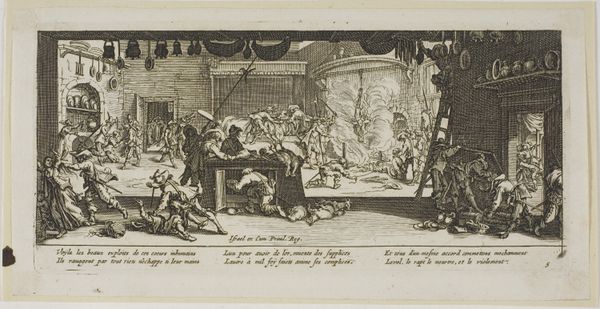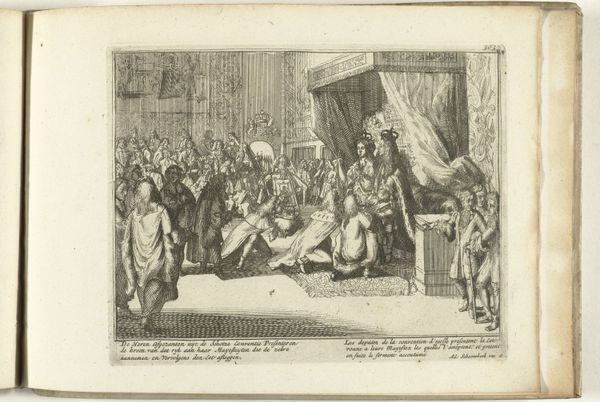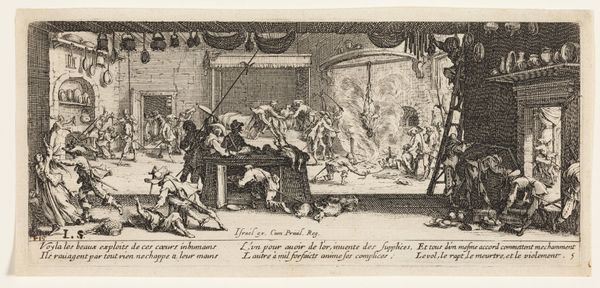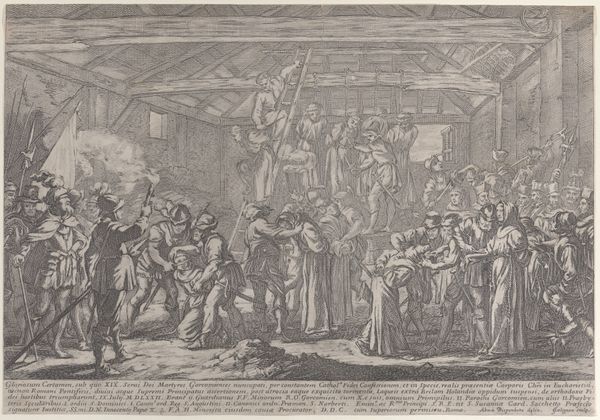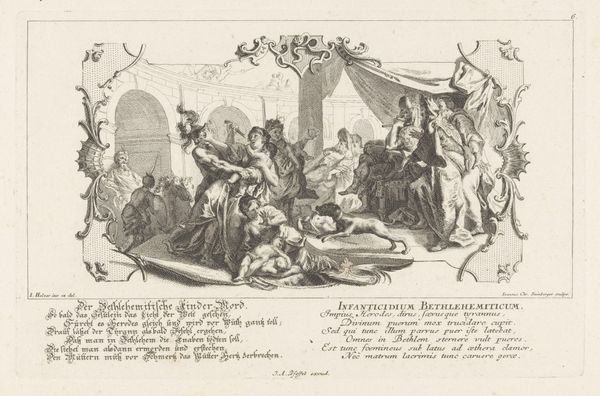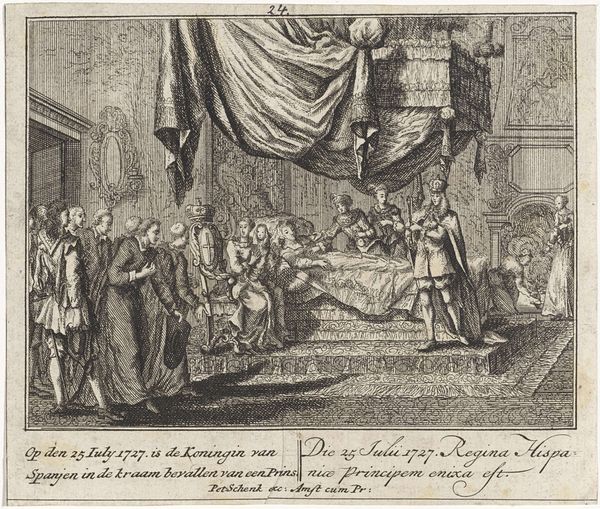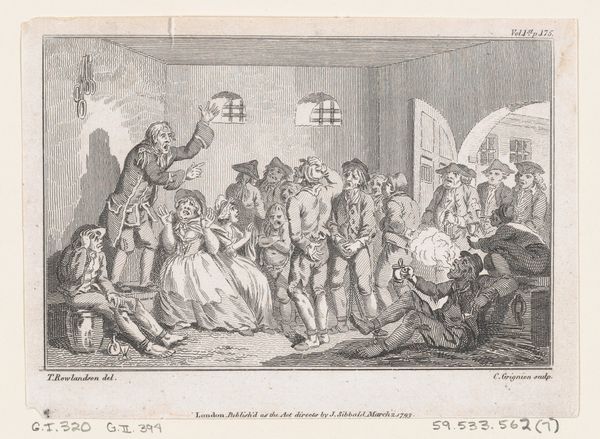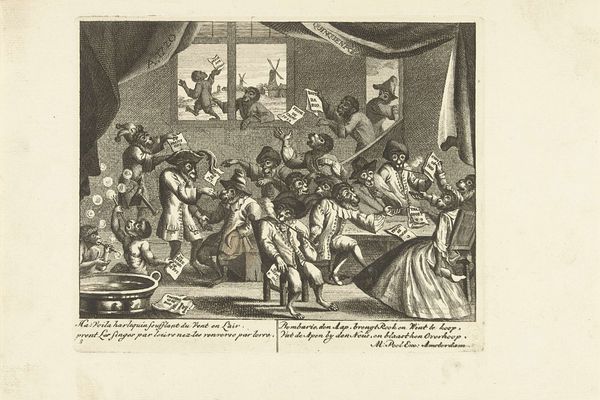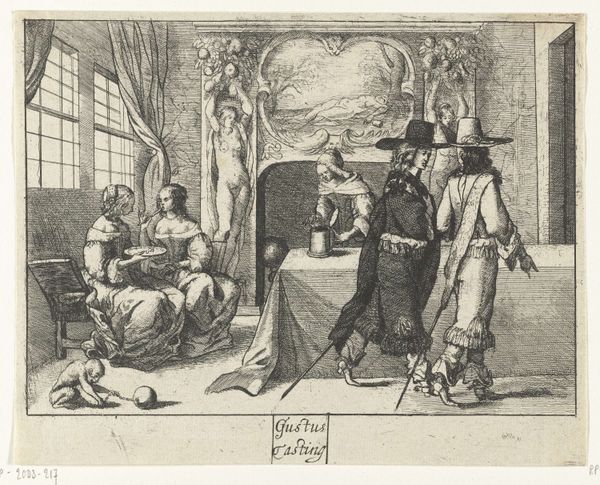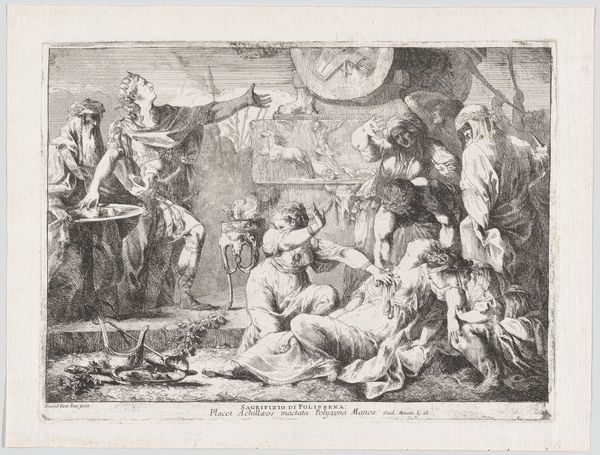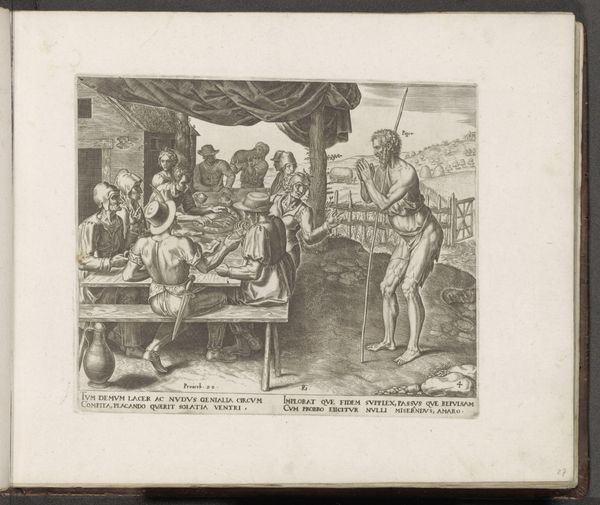
drawing, print, etching, engraving
#
drawing
#
allegory
#
narrative-art
#
baroque
# print
#
etching
#
figuration
#
history-painting
#
italian-renaissance
#
engraving
Dimensions: sheet: 7 3/16 x 12 1/16 in. (18.3 x 30.6 cm)
Copyright: Public Domain
Editor: This etching, "The Martyrdom of St. Lawrence" by Claude Vignon, was made sometime between 1622 and 1632. The whole scene is intense, filled with so many figures in different states of action. It's a complex composition with figures from a ruling court overseeing the brutal execution. What catches your eye when you look at this image? Curator: The immediate symbolic weight for me is the juxtaposition of power and suffering, those figures representing authority observing the agony of Saint Lawrence. Consider how Vignon contrasts the seated dignitaries, cloaked in rich garments, with the exposed and vulnerable body of the martyr. It asks a question, doesn’t it, about the nature of justice, sacrifice, and the spectacle of public execution in that era. Editor: Absolutely, I see what you mean. And then, above St. Lawrence is what appears to be an angel ready to place a laurel crown on his head? What is the cultural significance of that specific imagery, or even of the martyr being raised above everyone on a grill? Curator: Precisely! That angel with the crown, it's a clear visual reference to divine recognition and triumph over earthly suffering. The grill becomes an emblem of his unwavering faith. Remember that St. Lawrence was a popular saint. His story became a powerful symbol of resistance against persecution, especially during periods of religious conflict. The object itself speaks volumes: a crude instrument for execution, repurposed into a beacon of spiritual strength. Even more, note the gaze of St. Lawrence: his face is contorted from suffering, yet looks heavenward. What would this entail for a seventeenth-century audience? Editor: He's really positioned himself as a holy figure who believes that something good will come from his pain... What I am starting to notice too is that Vignon positioned figures from a range of social standings in this image. It almost resembles an allegory about human nature. Curator: Exactly! This engraving shows that the symbolism in this work can carry meanings that remain significant and provoke questions centuries later. Editor: Definitely! I see the Baroque love for drama in a new way after our talk. Thank you!
Comments
No comments
Be the first to comment and join the conversation on the ultimate creative platform.
